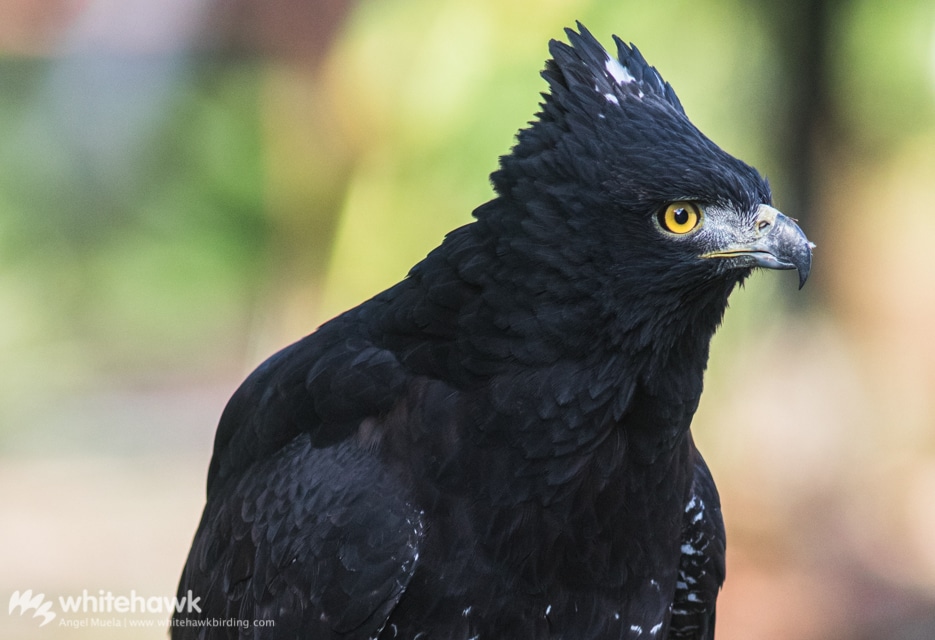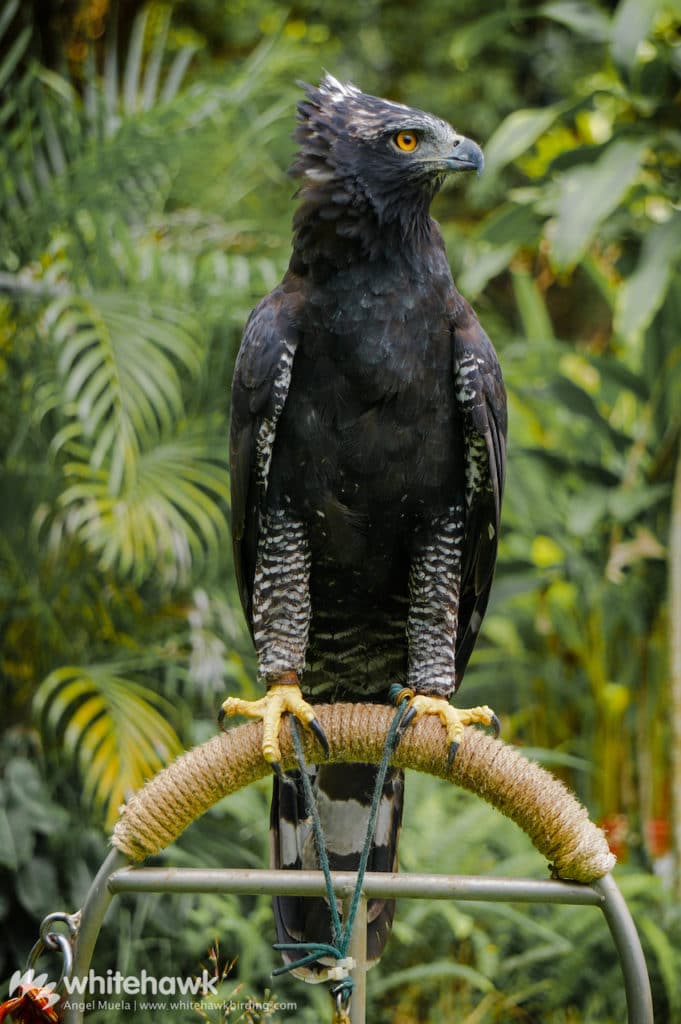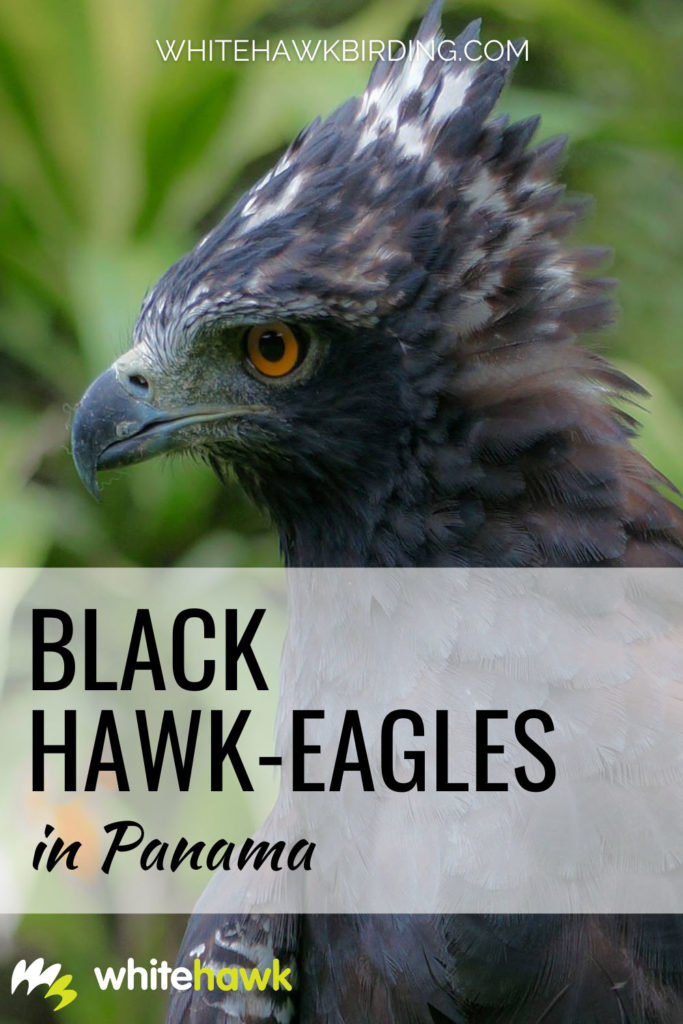Amongst the several species of raptors that one can see in Central and South America, the Black Hawk-Eagle (Spizaetus tyrannus) is probably one of the most common to see. They can be found in different types of habitats ranging from secondary and primary lowland forests, disturbed forest, open areas, woodlands and forest edges practically all throughout the Neotropics, from central Mexico down to southern Brazil and northern Argentina. However, this does not mean that they are easy to spot.

Where to look for Black Hawk-Eagles
Black Hawk-eagles spend a lot of time soaring over the forest canopy. They are often heard vocalizing loudly, indicating their presence in the area. In fact, most of our observations of this beautiful raptor have happened because we heard its distinctive high-pitched call above us. Pipeline Road in Soberania National Park can be a great place to spot (or at least hear) these majestic birds of prey. If one is lucky, they may also observe one from the tower at the Panama Rainforest Discover Center. The open paths in Gamboa offer a clear view of the sky – another great opportunity to look for and listen for this species.
Black Hawk-Eagle Diet and Nesting
Black Hawk-Eagles, like many birds of prey, are apex predators. As such, they play an important role in maintaining an equilibrium in the ecosystems in which they live. They help control prey populations by culling the sick and weak. This is beneficial in the long run to the health of these populations. The Black hawk-Eagle feeds on small to medium-sized arboreal mammals like squirrels, small monkeys, and opossums. It also eats medium sized birds like parrots, toucans, and some reptiles such as snakes and iguanas.

There is not a lot of information regarding its breeding biology. However, based on different field observations, we know that Black Hawk-Eagles build a large nest of sticks on lateral branches from the main trunk of a large tree. The known clutches have consisted of a single egg and it is the female who tends both the egg and, later on, the nestling.
Threats to Black Hawk-Eagles
Birds of prey have always inspired both awe and fear in people. They are, no doubt, charismatic animals that cause a mixture of curiosity, attraction and respect. Their innate predatory nature, and a general lack of knowledge about birds of prey, has created a direct conflict between raptors and people. This is particularly true in areas where raptor habitats and human settlements overlap. Even though birds of prey have some sort of conservation status and some level of governmental protection in most countries, they, nevertheless, tend to be persecuted throughout their range. There are several reasons for their decline: poaching, habitat destruction and illegal collection of eggs and nestlings.
In fact, because of the unfortunate stealing of young raptors from nests we are now caring for not one, but two Black Hawk-Eagles. When a person takes a young raptor from its nest and raises it, it easily becomes imprinted on people. When a bird is imprinted, it identifies as the species it is imprinted on. Therefore, a bird imprinted on humans lacks the necessary fear to remain safe in the wild. It also may be unable to relate successfully (including mating) with others of its species.
JarJar, the Black Hawk-Eagle: An Avian Ambassador
Now an adult Black Hawk-Eagle, JarJar was stolen from his nest when he was a nestling. He grew up around people and consequently became too tame and is accustomed to being with humans. The Panamanian officials confiscated him and deemed him unfit for release due to his lack of fear around people. Panama’s Ministry of the Environment put him under the custody and care of Angel, one of Whitehawk’s founders. Angel is a falconer and has worked and trained raptors for over 25 years. JarJar can never go back to the wild. However, he is now actively working as an ambassador for birds of prey and promoting the conservation of Nature.

Every year JarJar visits several Panamanian schools. He meets hundreds of students from 1st to 8th grade as part of our Jr. Naturalist Program. Students learn about their diet, habitat, conservation challenges and other characteristics. They also can get up close and personal and really see details of a raptor that otherwise would have been difficult or almost impossible to observe. JarJar’s powerful talons are always a source of fascination for kids. They are delighted by his ability to ruffle his feathers and rest on one foot if he is calm. They are impressed with how he is alert to any subtle movement.
Join us on one of our tours to Panama to search for Black Hawk-Eagles and some of the other nearly 1,000 species found in this amazing country.



